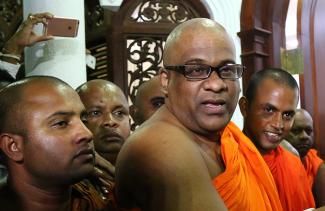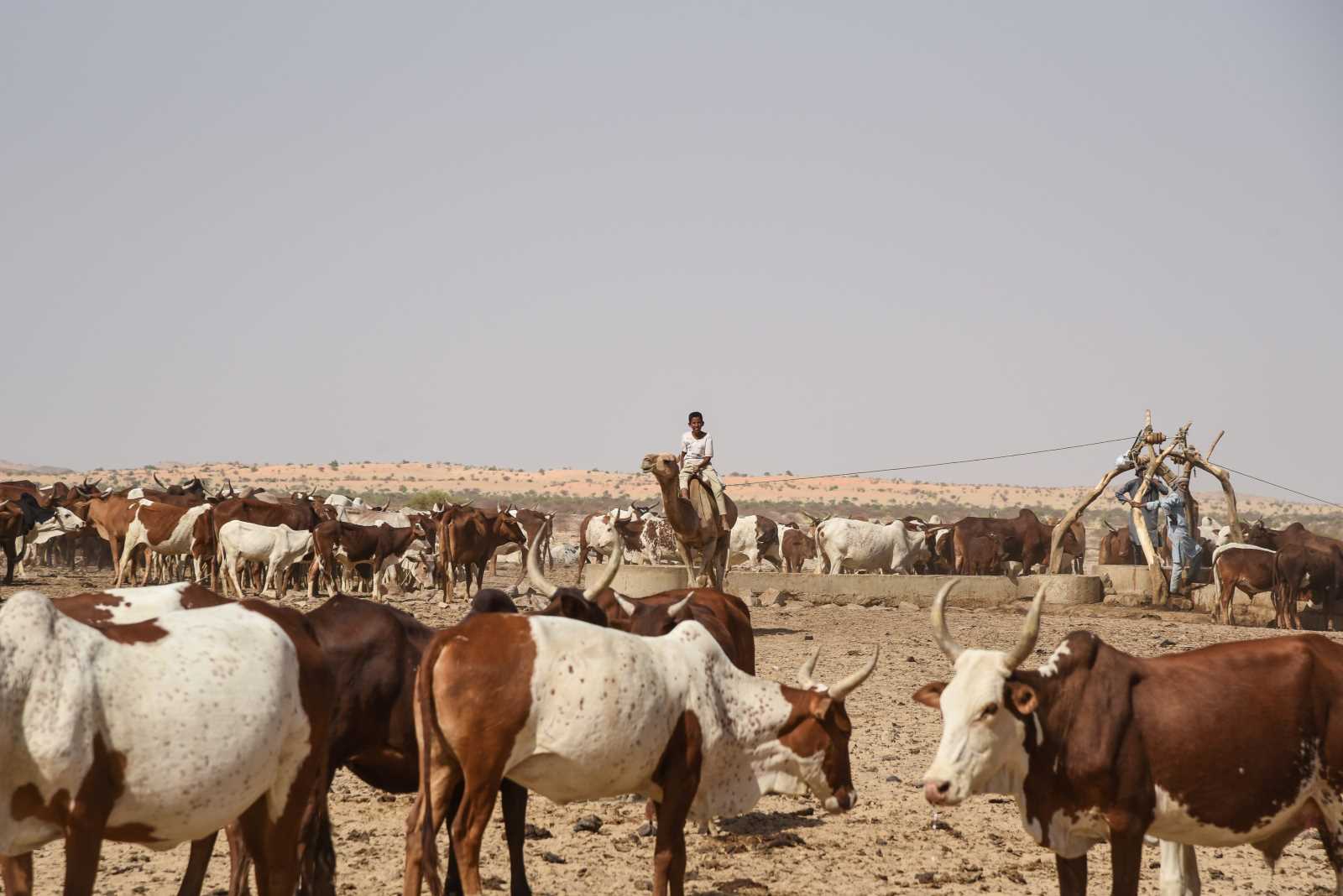Ethno-religious identities
Tinged with racism

The Easter Sunday bombings of three churches and three hotels ripped Sri Lanka out of a ten-year period of relative peace. Some 260 people were killed. The country had felt comparatively quiet since the end of the civil war between the Liberation Tigers of Tamil Eelam (LTTE) and government forces. But the old tensions continued to simmer under the surface, and new ones have emerged.
April’s suicide attacks were carried out by Islamist extremists belonging to the organisation National Thowheed Jamaat. They targeted Sri Lanka’s Christian minority. But Buddhists instantly grasped the opportunity to express anti-Muslim resentment and launch campaigns accordingly. Right-wing nationalist organisations like the “Buddhist fighting force” Bodu Bala Sena (BBS), an organisation founded by Buddhist monks that has long warned against Islamist extremism, have been gaining momentum.
The ethnic and religious tensions in Sri Lanka’s complex society can be traced back to before the colonial era. They have repeatedly led to violence. Events that have gone down in history include the Kotahena riots of 1883, a series of bloody clashes between Buddhists and Catholics, and the Sinhalese-Muslim riots of 1915, in which Buddhists fought against Muslims.
However, the ethnic and religious causes of these conflicts cannot be teased apart: these affiliations overlap in Sri Lanka, and religious identity to a certain extent forms the basis of ethnic identity. That is how “ethno-religious” groups emerged.
The largest population group are the Sinhalese, who are overwhelmingly Buddhist. The second-largest group are the Tamils, most of whom are Hindus. There are also Muslims and Christians, the latter being found among both the Sinhalese and the Tamils, as well as a few other small religious communities.
The Buddhist Sinhalese have always seen Sri Lanka as their homeland. They believe that they have an uninterrupted history as a Buddhist-Sinhalese nation and claim to always have lived here. By contrast, the Hindu-Tamil minority has always lived with a feeling of insecurity. Some were brought to the island by the British colonial power in order to work on plantations. However, the larger number who live in the north and east have a distinct culture. Their feelings of exclusion worsened when the Sinhalese came to power after independence and soon curtailed the special rights ethnic minorities had enjoyed, for instance in regard to education, trade and political representation.
Language plays an important role. Before the country became independent from Britain in 1948, English was the official language and the language of education. Then an argument erupted concerning whether Sinhalese and Tamil should serve those functions. Some stated that only the language of the majority should be used. Following an election that was largely focused on this issue, a national coalition came to power in 1956 that pushed Sinhalese through as the sole official language.
Buddhists against Hindus
That event was one of the primary reasons why the Tamils began, in the 1960s and 70s, to fight for their linguistic and political rights. When their demands were rejected, they called for the creation of an independent state in the areas where they made up the majority of the people. That effort failed as well, and various groups took up arms. The result was three decades of civil war.
The conflict is often presented as an ethnic conflict between the Sinhalese and the Tamils. But rhetoric and mobilisation often depicted it as struggle between Buddhists and Hindus. When the nationalist government of Mahinda Rajapaksa, the former president, militarily beat them, it acted as though its victory was the triumph of Sri Lankan Buddhism over all other religions.
Even after 2009, however, ethnic and religious tensions did not subside completely. All subsequent governments have manipulated the tensions, and no administration has attempted to uproot radical priests and intolerance. Policymakers fear to offend those leaders’ constituents. Christians, particularly Evangelicals, are threatened and intimidated. In recent years, Muslims have also increasingly become the target of attacks and hate speech. Nationalist Buddhist groups like the BBS are particularly aggressive. Over time, the BBS has become a broad-based movement that has ramifications throughout the country. It could also count on the silent support of Rajapaksa, who was in office until 2015.
At a large rally in February 2013, the BBS published a ten-point resolution. Among other things, it demanded that food should no longer be certified as halal, that women should no longer be allowed to work in the Middle East and that no more mosques should be built with funding from Arabic countries. The BBS propagated the idea that Muslims would destroy Buddhist heritage and that Muslim business owners would force their Sinhalese employees to convert to Islam.
This BBS campaign came to a head in the June 2014 riots that cost four people their lives. Around 80 others were wounded and thousands were displaced. The leaders of the BBS and other radical groups escaped unscathed.
There was another wave of violence against Muslims in February 2018. This time, it was primarily perpetrated by the group Mahason Balakaya. In Sri Lanka’s central province, numerous Muslim-owned businesses were destroyed after a group of Muslim youth had killed a Sinhalese in a fight. A visually-impaired Muslim died in a burning house. The leaders of the extremist organisations that was responsible for the aggressions were arrested and charged, but they were later released on bail.
The Easter Sunday bombings led to the latest flare-up of anti-Muslim violence. Some three weeks later, Muslim businesses were attacked in multiple cities in the northwest and west. According to the Muslim activist Hilmy Ahamed, most of these incidents were inspired by rivalries between shop owners. In his eyes, the problem is that “racism mobilises the mob”. A full-blown campaign is going on against Muslim women. Many Sinhalese have decorated their shops with stickers that read “Api Sinhala” (“We are Sinhalese”).
A disconcerting pardon
Galagoda Aththe Gnanasara, the general secretary of the BBS, is a Buddhist monk. He was sentenced to prison last year for threatening witnesses and lawyers in court. Shortly after the Easter Sunday attacks, he was pardoned by President Maithripala Sirisena. He had not even served a single year of his six-year sentence. The head of state was apparently eager to secure the support of Buddhist-Sinhalese hardliners.
The current government had never criticised the radical monk in the past, even though it came to power primarily on the votes of Hindus, Christians and Muslims. The pardon disconcerted human-rights activists in Sri Lanka. It is now being contested in court. The BBS, meanwhile, is enjoying the public’s full attention, staging huge rallies and dominating TV news.
The ethnic tensions are playing into the hands of the nationalist Sri Lanka Podujana Party (SLPP), which is now fielding Gotabaya Rajapaksa, the former president’s brother as its presidential candidate. The party wants to come back into power in the upcoming elections and is trying to secure the support of Sinhalese voters with racist statements. At a demonstration in the city of Kandy, Gnanasara went so far as to say that he wants a parliament that is only made up of Buddhist-Sinhalese representatives. “We cannot have any minorities in parliament because that would give them the power to make decisions about the government.”
Hopefully the upcoming election campaign will spark a public debate about what kind of country Sri Lankans want to live in. We will know in January whether a Buddhist-Sinhalese theocracy will prevail or a multi-cultural vision that has the courage to treat all religions and ethnicities equally. The great irony is that Sri Lanka has a long history of religious communities living peacefully side by side. Such peace cannot be taken for granted however, because identity politics offers reckless leaders routes to power.
Anupama Ranawana-Collie is a theologian, writer and researcher and presently a visiting researcher at Oxford Brookes University, Oxford, United Kingdom.
Twitter: @ARanawana25
Arjuna Ranawana is editor of RepublicNext.com.
arjuna@republicnext.com











